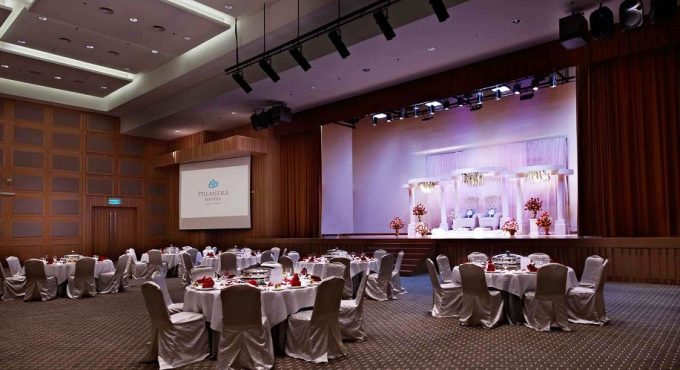Malay weddings are usually grand affairs where the bridal couple is treated as Raja Sehari (royalty for the day). Normally spread out over several nights, festivities begin with the Berinai (henna-staining) ceremony, followed by the Nikah (solemnization) ceremony, and culminating with the Bersanding (the sitting-in-state ritual), which is a customary wedding ceremony.
The Engagement or Istiadat Bertunang
Malay engagements tend to be formal, where exchange of gifts is normally expected. On this occasion, the families (or representatives) of the prospective bride and groom will discuss and agree upon a wedding date and other such details.
The Henna-staining Ceremony or Majlis Berinai
The excitement of an actual marriage usually commences three days before the wedding itself. On this exhilarating occasion, the bride-to-be takes the opportunity to show off her trousseau, changing five to six times throughout the day, as a sign of good luck. Her friend and relatives are invited to view her nuptial wardrobe. In fact, the series of popularly practiced wedding rites and rituals actually starts with the henna-staining ceremony. During this colourful and lively observance, yellowish oil extracted from henna leaves is applied on the fingertips of the couple by friends and relatives in order to symbolize their forthcoming unity.
The Solemnization Ceremony or Istiadat Nikah
This is the religious solemnization of a marriage and usually takes place on a Thursday night while the Majlis Bersanding is usually held on a Saturday evening. The Nikah is required by both Islamic and civil law in which to legalize a marriage and to make it officially recognized.
The Sitting-in-State Ceremony or Majlis Bersanding
The Majlis Bersanding is when the bride and groom sit-in-state for the first time officially as husband and wife. Placed on a dais known as the pelamin, the bridal “throne” is the focal centrepiece of the occasion. The Bersanding ceremony customarily takes place in the afternoon (although in contemporary times this is usually at night), where the groom is regally escorted by a colourful procession comprising of a hadrah or kompang band (musicians playing traditional Malay musical instruments, often Arabian in influence and origin) as well as some close relatives and friends as he makes his way to the pelamin at the bride’s house or wedding venue.
Traditionally, an Astakona, a tiered pedestalled tray, will be placed in front of the Pelamin. Each tier contains a mound of cooked yellow rice studded with red-dyed eggs. This tray will later be presented to the “emak pengantin” (a close friend or relative chosen to be the matron of honour for the marriage) as an act of appreciation for her help during the various ceremonies.
Sometimes the Bersanding ceremony is also observed at the groom’s house for the benefit of the groom’s kinfolk, but this is not automatically expected. Followed by feasting and merry-making called the kenduri, the wedding celebrations come to an end when the bridal couple goes to the bride’s house to pay respects to the bride’s family.


Comments 0